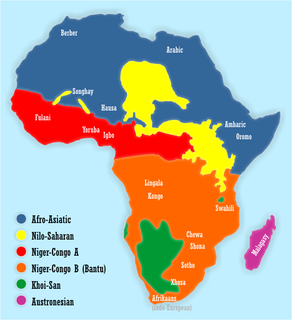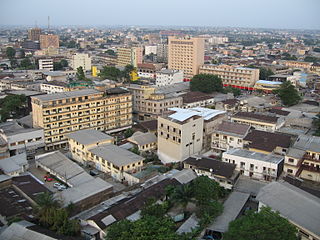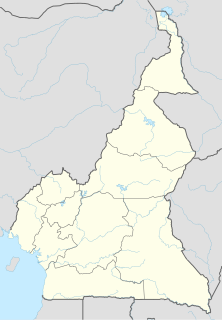
The Bantu languages or Ntu languages (/ⁿtu/), technically the Narrow Bantu languages, as opposed to "Wide Bantu", a loosely defined categorisation which includes other "Bantoid" languages, are a large family of languages spoken by the Bantu peoples throughout Sub-Saharan Africa.

Lingala (Ngala) is a Bantu language spoken throughout the northwestern part of the Democratic Republic of the Congo and a large part of the Republic of the Congo. It is spoken to a lesser degree in Angola and the Central African Republic. There are over 70 million lingalophones.

Tsonga or Xitsonga is a Bantu language spoken by the Tsonga people. It is mutually intelligible with Tswa and Ronga, and the name "Tsonga" is often used as a cover term for all three, also sometimes referred to as Tswa-Ronga. The Xitsonga language has been standardized for both academic and home use, making it the base language for the Tsonga people. Like with many other languages, there are various dialects within the Tsonga language group.
The Bemba language, ChiBemba, is a Bantu language spoken primarily in north-eastern Zambia by the Bemba people and as a lingua franca by about 18 related ethnic groups, including the Bisa people of Mpika and Lake Bangweulu, and to a lesser extent in Katanga in the Democratic Republic of the Congo, Tanzania, and Botswana. Including all its dialects, Bemba is the most spoken indigenous Bantu language and a lingua franca in Zambia where the Bemba form the largest ethnic group. The Lamba language is closely related and some people consider it a dialect of Bemba.
Masaba (Lumasaaba), sometimes known as Gisu (Lugisu) after one of its dialects, is a Bantu language spoken by more than two million people in East Africa. Gisu dialect in eastern Uganda is mutually intelligible with Bukusu, spoken by ethnic Luhya in western Kenya. Masaba is the local name of Mount Elgon and the name of the son of the ancestor of the Gisu tribe. Like other Bantu languages, Lumasaba has a large set of prefixes used as noun classifiers. This is similar to how gender is used in many Germanic and Romance languages, except that instead of the usual two or three, there are around eighteen different noun classes. The language has a quite complex verb morphology.
Chewa, also known as Nyanja, is a Bantu language spoken in much of Southern, Southeast and East Africa, namely the countries of Malawi and Zimbabwe, where it is an official language and Mozambique and Zambia where it is a recognised minority language. The noun class prefix chi- is used for languages, so the language is usually called Chichewa and Chinyanja. In Malawi, the name was officially changed from Chinyanja to Chichewa in 1968 at the insistence of President Hastings Kamuzu Banda, and this is still the name most commonly used in Malawi today. In Zambia, the language is generally known as Nyanja or Cinyanja/Chinyanja '(language) of the lake'.

The Songhay or Songhai languages are a group of closely related languages/dialects centred on the middle stretches of the Niger River in the West African countries of Mali, Niger, Benin, Burkina Faso and Nigeria. In particular, they are spoken in the cities of Timbuktu and Gao. They have been widely used as a lingua franca in that region ever since the era of the Songhai Empire. In Mali, the government has officially adopted the dialect of Gao as the dialect to be used as a medium of primary education.
Soga, or Lusoga, is a Bantu language spoken in Uganda. It is the native language of the Soga people or Basoga of the Busoga region of southern Uganda. With over three million speakers, it is one of the major languages of Uganda, after English, Swahili, and Luganda. However, it is largely restricted to the Busoga region, which is mainly within the natural boundaries of Lake Victoria to the south, Lake Kyoga to the north, the Nile river to the west and the Mpologoma (Lion) river to the east of Namutumba district. It is tonal.
The Duala are an ethnic group of Cameroon. They primarily inhabit the littoral region to the coast and form a portion of the Sawabantu or "coastal peoples" of Cameroon. They have historically played a highly influential role in Cameroon due to their long contact with Europeans, high rate of education, and wealth gained over centuries as slave traders and landowners.
The Mungo (Moungo) are an ethnic group of the Republic of Cameroon. Along with the other coastal peoples, they belong to the Sawa ethnic groups. The Mungo have historically been dominated by the Duala people, and the two groups share similar cultures, histories, and claims of origin.
Tonga (Chitonga), also known as Zambezi, is a Bantu language primarily spoken by the Tonga people who live mainly in the Southern and Western provinces of Zambia, and in northern Zimbabwe, with a few in Mozambique. The language is also spoken by the Iwe, Toka and Leya people, and perhaps by the Kafwe Twa, as well as many bilingual Zambians and Zimbabweans.
Kituba is a widely used lingua franca in Central Africa. It is a creole language based on Kikongo, a family of closely related Bantu languages. It is an official language in Republic of the Congo and Democratic Republic of the Congo.

The 250 or so "Narrow Bantu languages" are conventionally divided up into geographic zones first proposed by Malcolm Guthrie (1967–1971). These were assigned letters A–S and divided into decades ; individual languages were assigned unit numbers, and dialects further subdivided. This coding system has become the standard for identifying Bantu languages; it was the only practical way to distinguish many ambiguously named languages before the introduction of ISO 639-3 coding, and it continues to be widely used. Only Guthrie's Zone S is (sometimes) considered to be a genealogical group. Since Guthrie's time a Zone J has been set up as another possible genealogical group bordering the Great Lakes.
Tswa (Xitswa) is a South-Eastern Bantu language in Southern Mozambique. Its closest relatives are Ronga and Tsonga, the three forming the Tswa–Ronga family of languages.
Baima is a language spoken by 10,000 Baima people, of Tibetan nationality, in north central Sichuan Province, and Gansu Province, China. Baima is passed on from parents to children in Baima villages. It is spoken within the home domain and is not used in any media of mass communication. Baima is often classified as a Sino-Tibetan dialect and is currently endangered.
Iyasa is a Bantu language of Cameroon and Equatorial Guinea by Ndowe coastal fishing people. It is also spoken by Pygmies, perhaps Babongo, in Gabon.
Sawabantu languages are a group of Bantu languages comprising most of zones A.20 and A.30 of Guthrie's classification, and most likely also part of zone A.10. According to Nurse & Philippson (2003), the A.20 and A.30 languages apart from Bubi form a valid node. The most important of these languages is Duala, which is a vehicular language.
Tonga is a Bantu language spoken by 170,000 people mainly in the Nkhata Bay District of Malawi, on the shores of Lake Malawi facing the islands of Likoma and Chizumulu.
Chichewa is the main language spoken in south and central Malawi, and to a lesser extent in Zambia, Mozambique and Zimbabwe. Like most other Bantu languages, it is tonal; that is to say, pitch patterns are an important part of the pronunciation of words. Thus, for example, the word chímanga (high-low-low) "maize" can easily be distinguished from chinangwá (low-low-high) "cassava" not only by its consonants but also by its pitch pattern.











